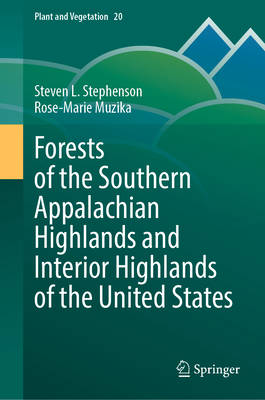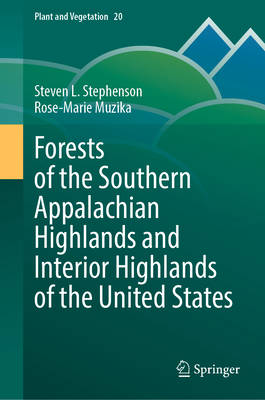
- Afhalen na 1 uur in een winkel met voorraad
- Gratis thuislevering in België vanaf € 30
- Ruim aanbod met 7 miljoen producten
- Afhalen na 1 uur in een winkel met voorraad
- Gratis thuislevering in België vanaf € 30
- Ruim aanbod met 7 miljoen producten
Zoeken
Forests of the Southern Appalachian Highlands and Interior Highlands of the United States
Steven L Stephenson, Rose-Marie Muzika
€ 158,45
+ 316 punten
Omschrijving
Spanning millennia of history and ecological transformation, this book explores the forested and non-forested ecosystems of the Southern Appalachians and Interior Highlands regions of the United States. It examines their fauna and flora, highlighting both shared and regionally distinct species. The volume provides a comprehensive treatment of the terrestrial biota, with chapters devoted to forest composition, vegetation structure, and fungal diversity. Additional chapters focus on the vertebrate and invertebrate fauna of the Appalachians and Ozarks, including mammals, birds, reptiles, amphibians, insects, and non-insect arthropods. Beyond taxonomy and ecology, the authors investigate the historical and contemporary forces that have shaped these landscapes--from the Woodland Period and European colonization to industrial exploitation and modern conservation efforts. Particular attention is given to the ecological impacts of logging, mining, invasive pathogens, and climate change, as well as to the resilience and vulnerability of these ecosystems. Rich in detail and imagery, and grounded in scientific rigor, this volume is an essential resource for ecologists, conservation biologists, forest managers, and anyone seeking a deeper understanding of the ecological heritage and future of these two mountain regions.
Specificaties
Betrokkenen
- Auteur(s):
- Uitgeverij:
Inhoud
- Aantal bladzijden:
- 278
- Taal:
- Engels
- Reeks:
- Reeksnummer:
- nr. 20
Eigenschappen
- Productcode (EAN):
- 9783032011541
- Verschijningsdatum:
- 27/09/2025
- Uitvoering:
- Hardcover
- Formaat:
- Genaaid
- Afmetingen:
- 165 mm x 239 mm
- Gewicht:
- 585 g

Alleen bij Standaard Boekhandel
+ 316 punten op je klantenkaart van Standaard Boekhandel
Beoordelingen
We publiceren alleen reviews die voldoen aan de voorwaarden voor reviews. Bekijk onze voorwaarden voor reviews.








